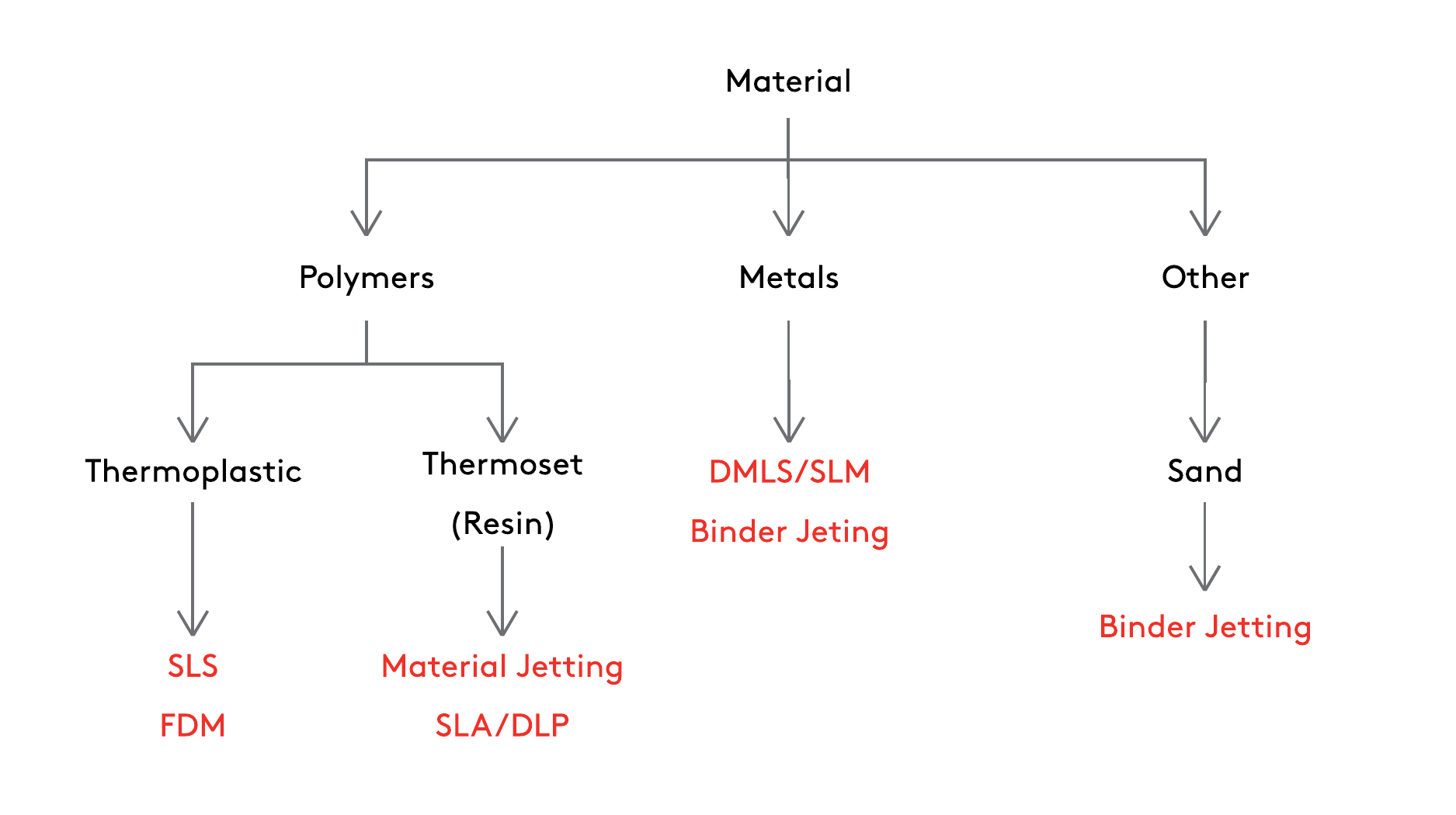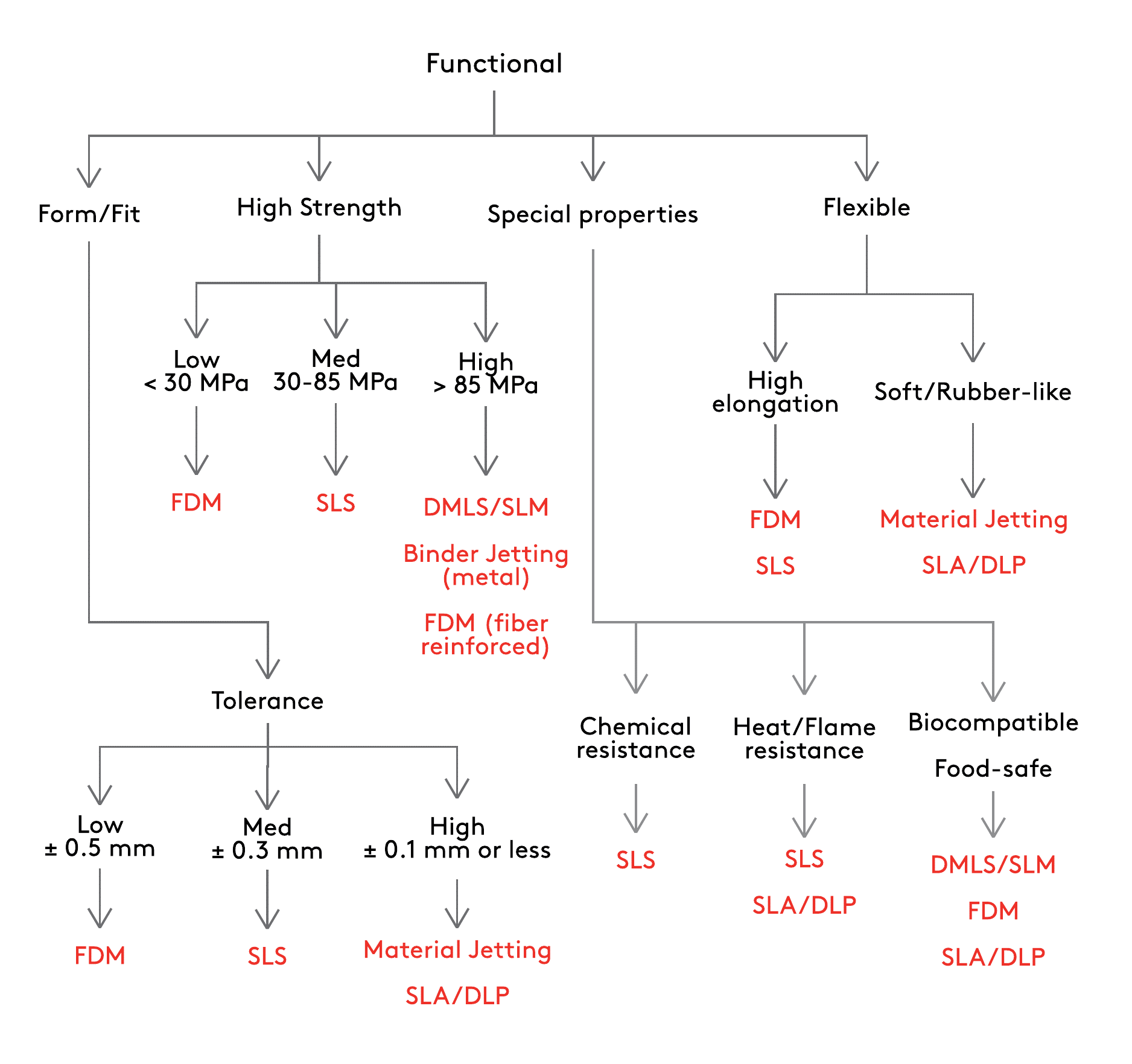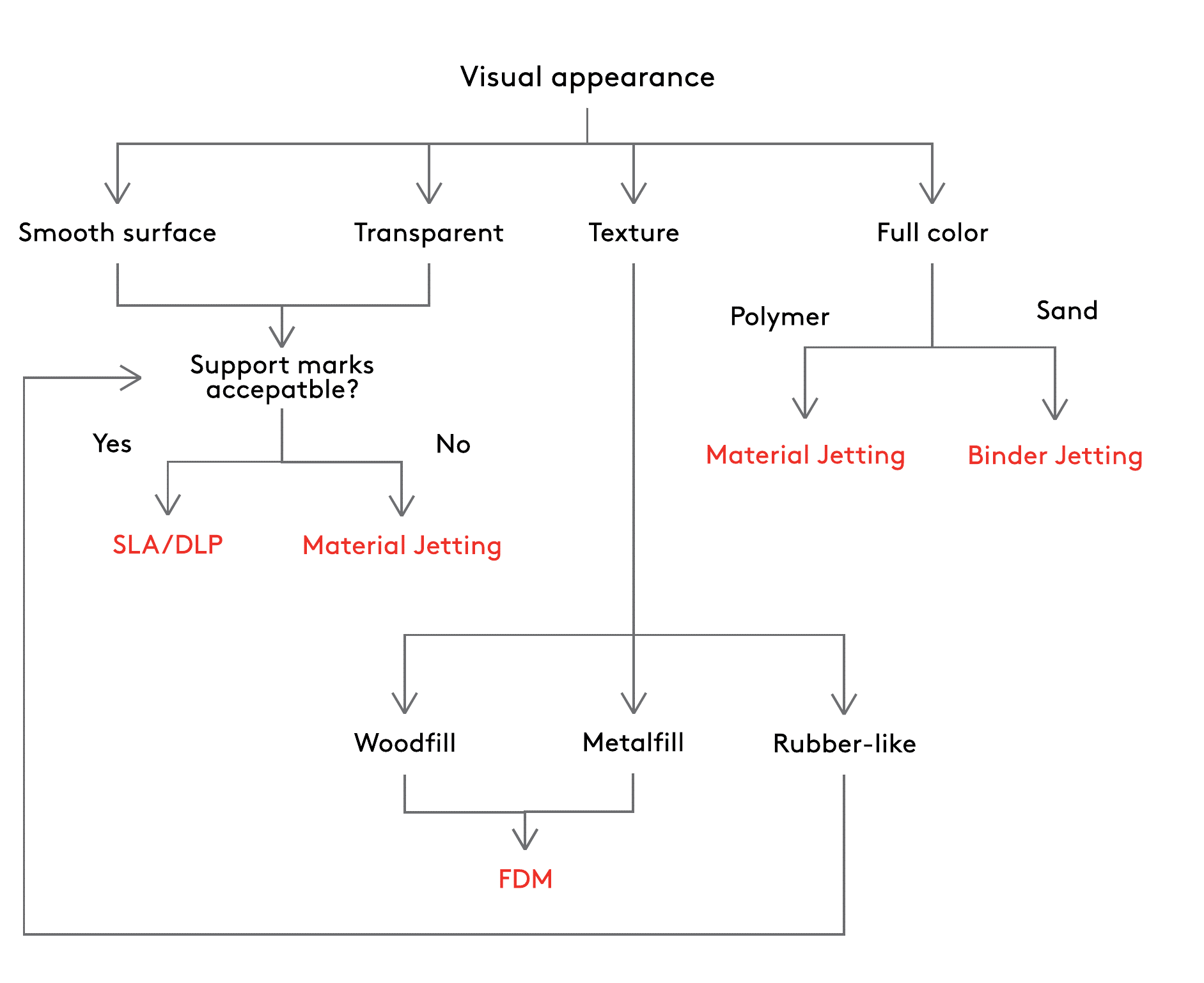Introduction
3D printing is a technology that has revolutionized the world of manufacturing and prototyping. Choosing the right 3D printing process is crucial to project success, affecting aspects such as cost, quality, and production time.
This guide explores the main criteria for selecting the right 3D printing process for different needs, looking in detail at material characteristics, required functionality, desired aesthetics, and production volumes.
Selection of Printing Process by Material
Types of Materials for 3D Printing
Materials for 3D printing can be classified mainly into three categories:
- Polymers (plastics): Divided into thermoplastics, such as ABS, PLA, PETG, and thermosets. Thermoplastic polymers are known for their strength and flexibility, making them ideal for functional applications. Thermosets, on the other hand, are used when a high-quality surface finish is needed.
- Metals: Including stainless steel, aluminum, titanium and other alloys. Metals are chosen for applications requiring high mechanical strength and precision.
- Other Materials: Such as ceramics and composite materials, used in specific applications that require special mechanical, thermal, or aesthetic properties.
Printing Processes by Material.
Each material is compatible with specific printing technologies:
- Filaments: Primarily used in the Fused Deposition Modeling (FDM) process. This process is suitable for creating functional prototypes and mechanical parts with thermoplastic polymers.
- Powders: Used in technologies such as Selective Laser Sintering (SLS) and Direct Metal Laser Sintering (DMLS). These processes are ideal for metals and polymers, offering high precision and mechanical strength.
- Resins: Used in processes such as Stereolithography (SLA) and Digital Light Processing (DLP). Resins are chosen for applications requiring high resolution and detailed surface finishes.
Comparison of Printing Processes.
When multiple technologies can use the same material, it is essential to compare the cost, production time, and final properties of the printed object.
For example, while the FDM technique might be cheaper for simple prototypes, SLS or SLA might offer better mechanical properties and surface finishes for more complex applications.

Figure: Selection of Printing Process Based on Material ©3DHUBS
Selection of Printing Process Based on Functionality.
Project Priority: Functionality vs. Aesthetics
The selection of the 3D printing process must consider whether the project priority is the functionality or the aesthetic appearance of the object:
- Thermoplastic polymers: Ideal for functional applications due to their strength and flexibility. They are commonly used in areas such as engineering and industrial manufacturing.
- Thermosets: More suitable for objects with high aesthetic requirements, such as jewelry or presentation models, because of their ability to achieve high-quality surface finishes.
Flow Charts for Process Selection.
A flow chart can help identify the most suitable 3D printing process based on common design requirements for functional parts and prototypes. These visual tools enable quick decisions based on key criteria such as strength, flexibility, precision, and surface finish.

Figure: Selection of Printing Process Based on Functionality ©3DHUBS
Selection of the Printing Process Based on Appearance
Aesthetic Features.
When visual appearance is the main goal of the 3D model, the selection of the printing process must consider desired aesthetic features, such as:
- Resolution: The ability of a process to print fine details. SLA and DLP offer very high resolutions compared to other processes.
- Surface quality: Surface finish is critical for presentation models and consumer products. Technologies such as SLA and Material Jetting offer smooth, detailed surfaces.
- Colors and transparencies: Some processes allow printing in multiple colors or with transparent materials, useful for artistic or design applications.

Figure: Print Process Selection Based on Appearance ©3DHUBS
Selection of Printing Process by Production.
Dimensional Accuracy and Repeatability
Dimensional accuracy and repeatability are critical to ensure that manufactured parts conform to design specifications. Processes such as SLS and DMLS offer high accuracy and are ideal for mechanical components that require tight tolerances.
Dimensions of Construction.
Build dimensions determine the maximum size of the manufacturable part. Technologies such as FDM and SLS offer large build volumes, while SLA and DLP are limited to smaller sizes but with greater detail.
Need for Support Structures
Support structures are needed to print complex geometries and can affect design freedom:
- SLS: Does not require supports, allowing greater design freedom.
- FDM with dissolvable supports: Provides the ability to create complex structures that can be easily removed after printing.
- Material Jetting: Uses supports that can be easily removed, making this process ideal for detailed models.
Comparison of 3D Printing and CNC Machining
CNC Machining
CNC (Computer Numerical Control) machining is a subtractive manufacturing process that offers many advantages:
- Excellent repeatability: Suitable for medium to high volume production.
- High precision: Ideal for parts requiring tight tolerances.
- Wide range of materials: Including metals, plastics and composite materials.
- Various surface finishes: Ability to achieve smooth and precise surfaces, essential for engineering and industrial applications.

Figure: Subtractive Manufacturing ©3DHUBS
Additive Manufacturing (3D Printing)
Additive manufacturing, or 3D printing, creates parts by adding material layer by layer. This method has several advantages:
- Reduced initial costs: It requires no special equipment other than the printer itself.
- Design flexibility: Ability to create complex geometries that would be difficult or impossible to achieve with subtractive machining.
- Rapid prototyping: Allows prototypes to be made and tested in a very short time, accelerating the product development process.

Figure: Additive Manufacturing ©3DHUBS
Final Considerations.
The choice between 3D printing and CNC machining depends on several project-specific factors, including:
- Functional and aesthetic requirements: The need for high precision, mechanical strength, or surface finishes.
- Production size: Production volumes, from one-off prototypes to mass production.
- Material used: The compatibility of the material with the chosen process.
- Available budget: The costs associated with each process, including initial and operating costs.
Understanding the characteristics and limitations of each process is essential to making an informed decision and optimizing the end result.
Choosing the correct manufacturing process can significantly improve product quality, reduce costs, and speed time to market.
©3DHUBS





